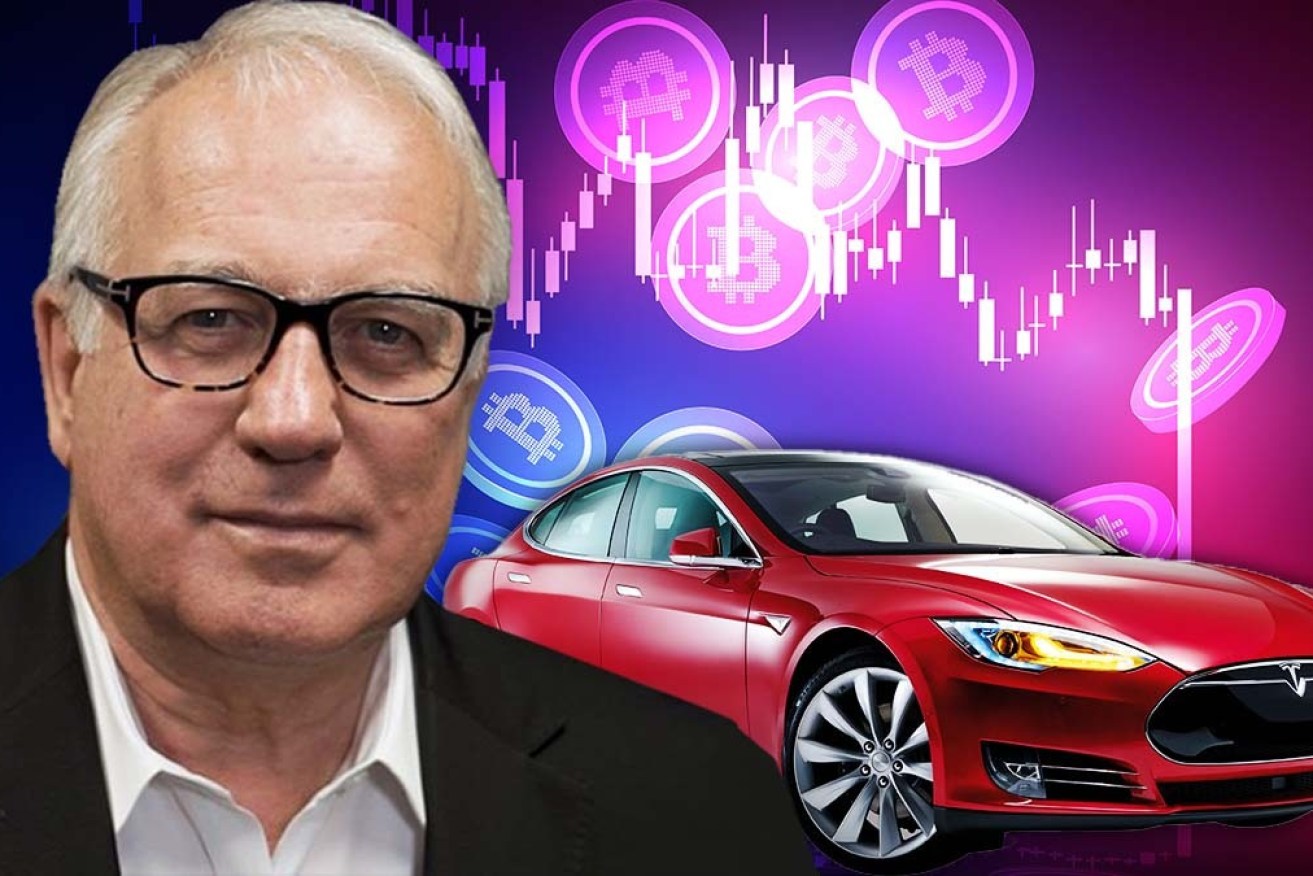Alan Kohler: Follow the money for the lasting story of 2021


Following the money shows us this year's big stories were cryptocurrencies and electric vehicles, writes Alan Kohler. Photo: TND
As we step gingerly toward the end of a year to forget, desperately hoping not to check into an exposure site or, worse still, actually get Omicron before Christmas Day, it feels like nothing else happened in 2021 apart from COVID-19 and its nasty variant children.
But when you follow the money a different picture emerges, in which 2021 was all about two other disruptions, and two windows into the future: Cryptocurrencies and electric vehicles.
I suspect there will be a lot to be said about Omicron when we come back in 2022, so for my final column for 2021 I’m going to look into that future.
The clue to the lasting story of 2021 is that the two top-performing assets over the year to date have been the cryptocurrency Ethereum, up 430 per cent, and an American EV company called Lucid, up 300 per cent.
Lucid is just 14 years old and delivered its first car in October. It’s now worth $92 billion, the same as 187-year-old National Australia Bank.
But then again, the Lucid Air Dream was named 2022 Car of the Year and is by all accounts a very nice vehicle.
In August, US President Joe Biden signed an executive order to make half of all new vehicles sold in the US by 2030 zero emissions, which would set up a government-guaranteed EV manufacturing boom, although that target looks a bit sick now that West Virginia Democrat Senator Joe Manchin has sunk the bill that is supposed to fund the EV subsidies.
But something will be done and electric cars are coming, subsidised or not.
And 2021 will go down as the year in which that momentous transition became certain, now that 48 countries and 12 US states have banned the sale of new internal combustion vehicles between now and 2040.
EVs and crypto
Tesla was the first mover with a 1000 per cent rise in its share price in 2020, followed by a choppy 50 per cent this year, which is why Lucid, the new contender, beat it in 2021.
After the March 2020 pandemic lows, Tesla and Bitcoin – EV and crypto – vied for the title of best-performing asset, and by April this year Bitcoin was ahead 1100 per cent to 1000 per cent.
But since then it has been all Ethereum, and therein, lies a tale.
There are two quite distinct types of cryptocurrencies, in my view, something that became much clearer in 2021.
There are the “store of value” cryptos, led by Bitcoin, with transparent and fixed scarcity that preserves value, and there are the “application platform” cryptos led by Ethereum.
In fact, in my view, the second group should not even be called cryptocurrencies at all – they are nothing like currencies and are not really investment assets.
They are just as subject to frenzied speculation as Bitcoin, but they are actually blockchain platforms for an entirely new form of commerce, including non-fungible tokens (NFTs) and decentralised finance (DeFi) businesses.
NFTs are digital assets that can’t be copied and DeFi businesses are a new form of anarchic commerce that doesn’t rely on centralised intermediaries like banks and brokers.
I think these cryptos should be called Rousseaus, after the enlightenment philosopher Jean-Jacques Rousseau, because they embody his idea that mankind is fundamentally good and the state fundamentally oppressive.

Tesla’s share price experienced a 1000 per cent increase in 2020.
Shades of Jean-Jacques Rousseau
Ethereum is essentially a global, decentralised supercomputer, competing with Google, Apple, SAP and Salesforce and other firms like them to run computing networks and payments.
The Ethereum blockchain is a bit like an App Store, where developers can create an app and make it available to users, as long as you get Apple’s approval and pay it 30 per cent.
But with Ethereum, there’s no approval and no 30 per cent, although it is still fairly expensive, so a whole lot of others like it have started up in cut-price competition, led by Solana, Polkadot and Binance.
They all offer an open-source blockchain with cheap – almost free – access for software developers and businesses to use, on the condition that they don’t want to keep any secrets.
Everything on these blockchains is open source – there is no such thing as patents and intellectual property.
When Uniswap created a non-custodial exchange for transferring crypto assets directly between investors without an intermediary charging a clip, SushiSwap was able to ‘steal’ the code and start another one.
There are also a growing number of decentralised finance (DeFi) businesses doing banking activities such as foreign exchange and lending, using one of the blockchain platforms as a way of cutting out intermediaries and reducing costs.
But the big news in 2021 has been digital art.
In March, a digital collage called Everydays sold for $US69 million ($89.5 million) in Ethereum tokens and there have been several multimillion dollar sales of NFTs this year.

Blockchain entrepreneur Vignesh Sundaresan shows the digital artwork Everydays he bought for $US69 million in March. Photo: Getty
‘A parallel universe’
Although the apps being put on these blockchains up to now are mostly DeFi businesses and NFTs, they can be used for anything.
For example, an Italian football club called Lazio has issued tokens on the Binance blockchain that give fans “governance rights” over the way the club is run, provide access to promotions, and offer VIP rewards and “special recognition” by the club.
In other words, it’s like a club membership, except it’s through a tradable token with conditions embedded in them: I can see a time when all clubs issue blockchain tokens to members.
If tokens were issued by a corporation that behaved like equity – that is, carried voting rights and the right to receive dividends – then the regulator would regard them as securities and the issuer would need a licence and would have to issue a prospectus.
And sure enough, some of the blockchain platforms have applied for licences, so watch this space for companies to be set up on blockchains instead of by issuing shares and listing on the ASX.
These “cryptocurrency” blockchains are entirely new structures for doing business, unfamiliar to anyone (like me) who is used to operating with traditional company, trust and partnership structures that have normal ownership and centralised, authoritarian governance.
So what began to emerge this year, in effect, is a parallel universe of commerce, where control is decentralised and the intermediaries that have controlled capitalism up to now are not welcome.
It is, in short, a revolution.
It’s possible that like all Rousseauian revolutions this one will drift into becoming the fascism and oppression it sought to upend.
And it’s also possible, if not likely, that like internet companies in 2000, the crypto prices crash, but if so, like the internet after 2000, the revolution will go on.
Along with the EV and energy revolution.
Alan Kohler writes twice a week for The New Daily. He is also editor in chief of Eureka Report and finance presenter on ABC news








